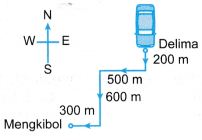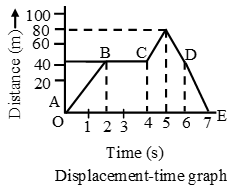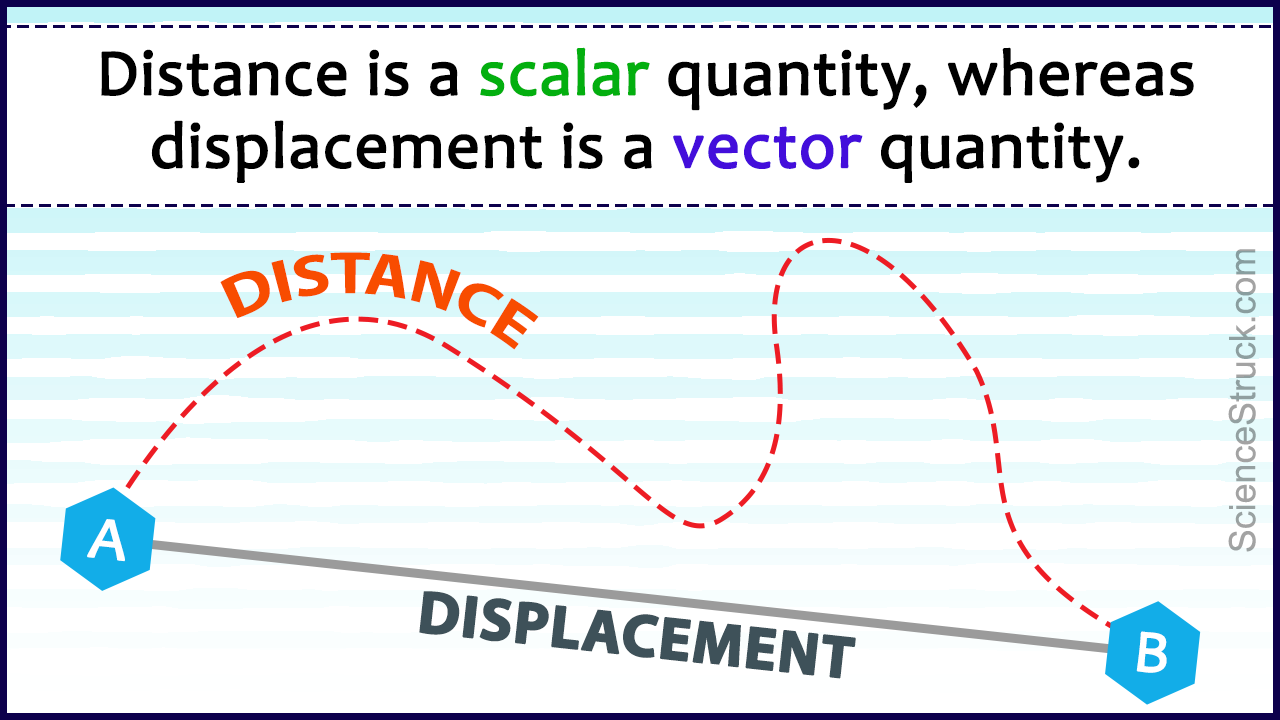What Is Distance And Displacement In Physics
- The path length between the initial and final positions of the particle gives the distance covered by the particle.

- Distance is defined as the total length of the path travelled from one location to another.
- The distance travelled by the car is given by the following,
Distance travelled = (200 + 500 + 600 + 300) m = 1600 m - The minimum distance between the initial and final positions of a body during that time interval is called displacement.

- Displacement by an object is the distance travelled by the object in a specific direction.
- It is the distance travelled by the object from its initial position to its final position in a straight line.
- For the car travelling from Delima to Mengkibol, the displacement is determined by measuring the length of the straight line connecting Delima to Mengkibol in the direction of Mengkibol from Delima. Hence from Figure, its displacement is given by the following,
Magnitude of the displacement
= √ (800² + 800²) = 1131 m
Its direction is South-West of Delima (or South 45° West of Delima) - Distance and displacement both are measured in meter in m.k.s. system.
Difference between distance and displacement
- Distance travelled is a scalar quantity while displacement is a vector quantity.
- When a body continuously moves in the same straight line and in the same direction then displacement will be equal to the distance travelled. But if the body changes its direction while moving, then the displacement is smaller than the distance travelled.
Displacement ≤ Distance - Displacement in any interval of time may be zero, positive or negative where as distance cannot be negative.
Distance And Displacement Example Problems With Solutions
Example 1: A person travels a distance of 5 m towards east, then 4 m towards north and then 2 m towards west.
(i) Calculate the total distance travelled.
(ii) Calculate the resultant displacement.
Solution: (i) Total distance travelled by the person
= 5 m + 4 m + 2 m = 11 m

(ii) To calculate the resultant displacement, we choose a convenient scale, where 1 cm represents 1 m. We draw a 5 cm long line AB towards east and then 4 cm long line BC towards north. Finally, a 2 cm long line CD towards west. The resultant displacement is calculated by joining the initial position A to the final position D. We measure AB = 5 cm.
Since 1 cm = 1 m
∴ 5 cm = 5 m
Hence, the displacement of the person
= 5m towards AD.
Example 2: A body is moving in a straight line. Its distances from origin are shown with time in Fig. A, B, C, D and E represent different parts of its motion. Find the following :
(i) Displacement of the body in first 2 seconds.
(ii) Total distance travelled in 7 seconds.
(iii) Displacement in 7 seconds

Solution: (i) Displacement of the body in first 2s = 40m
(ii) From t = 0 to t = 7 s, the body has moved a distance of 80 m from origin and it has again come back to origin.
Therefore, the total distance covered = 80 × 2 = 160 m
(iii) Since the body has come back to its initial position, the displacement is zero.
